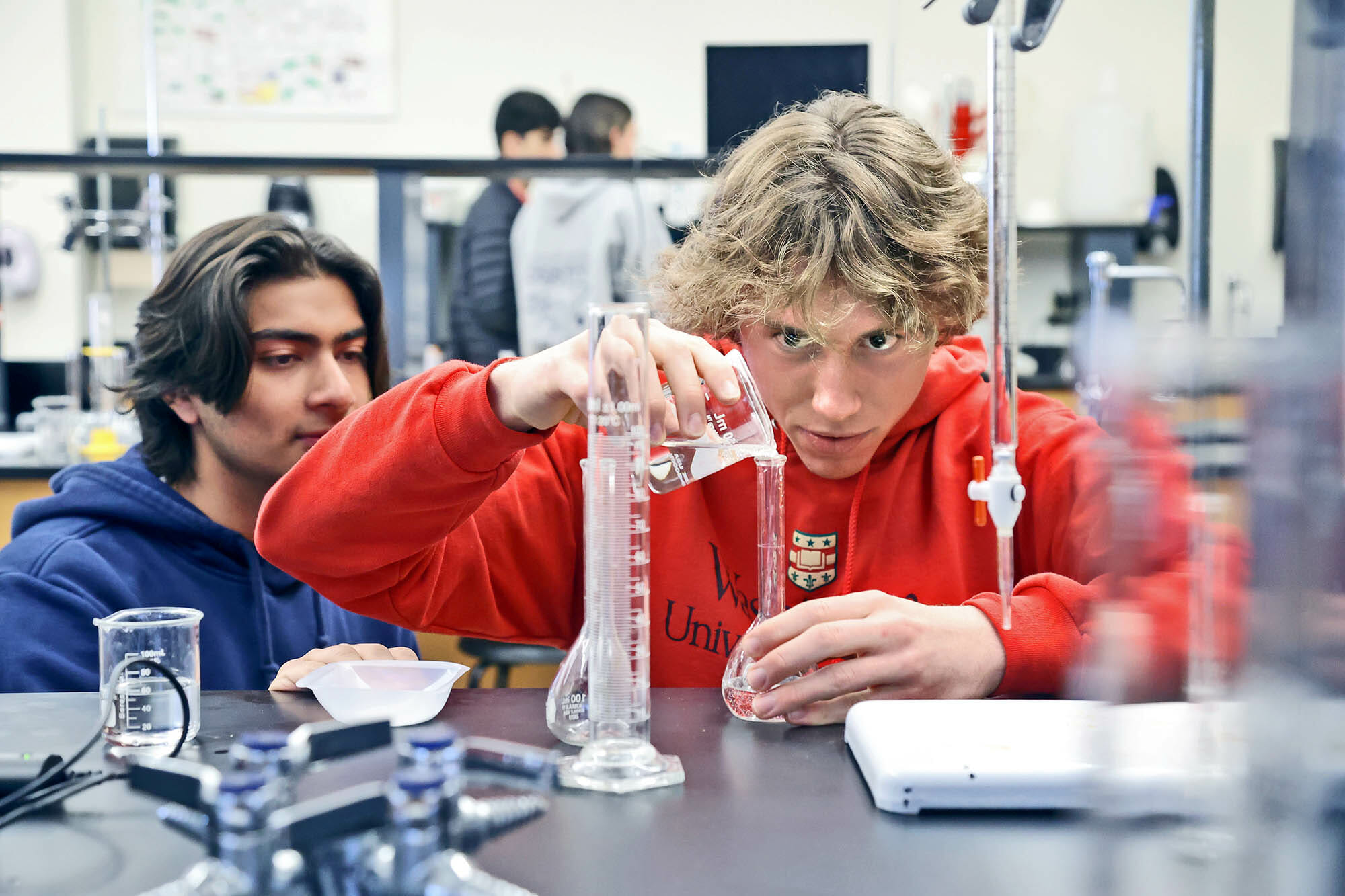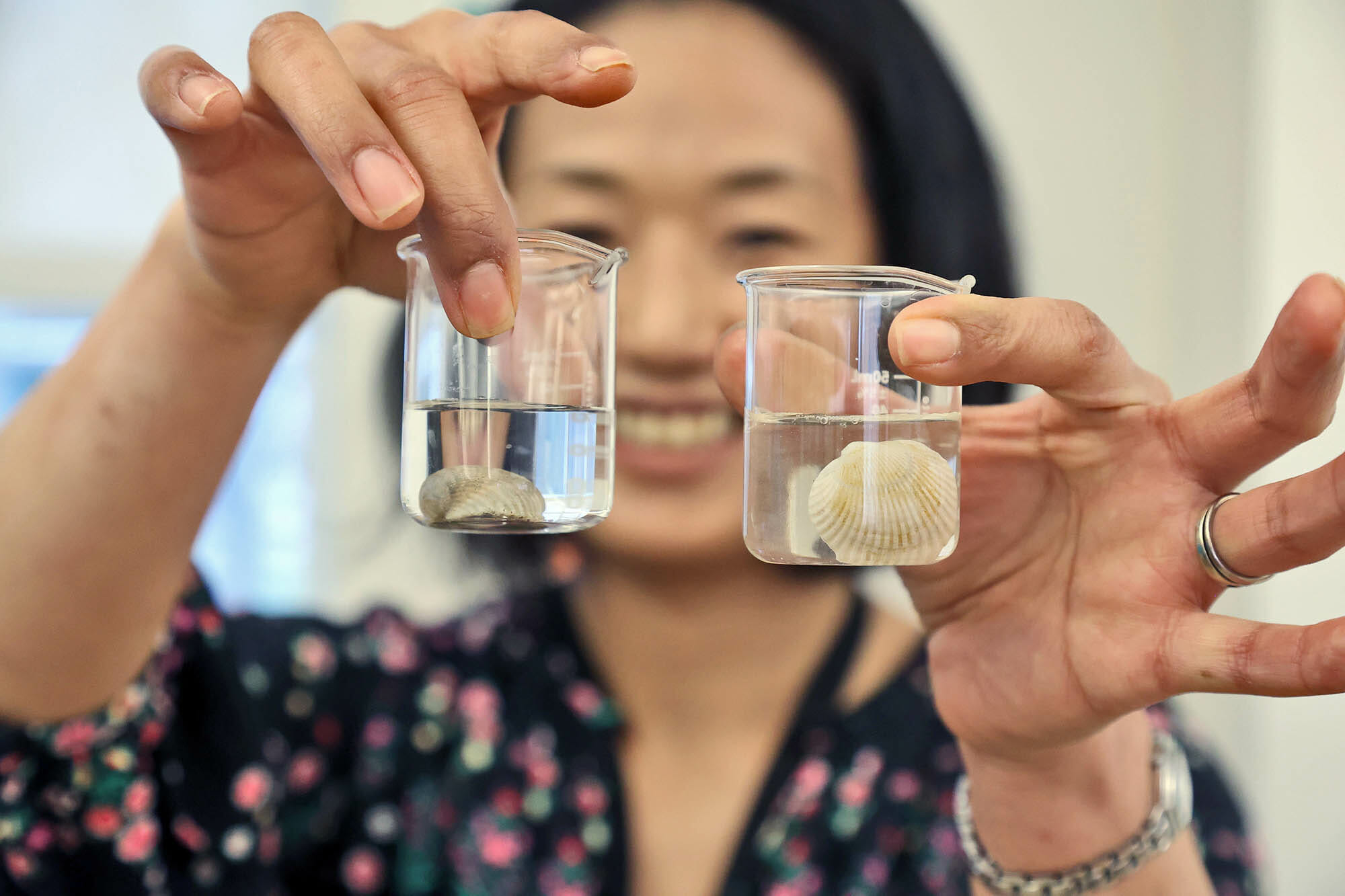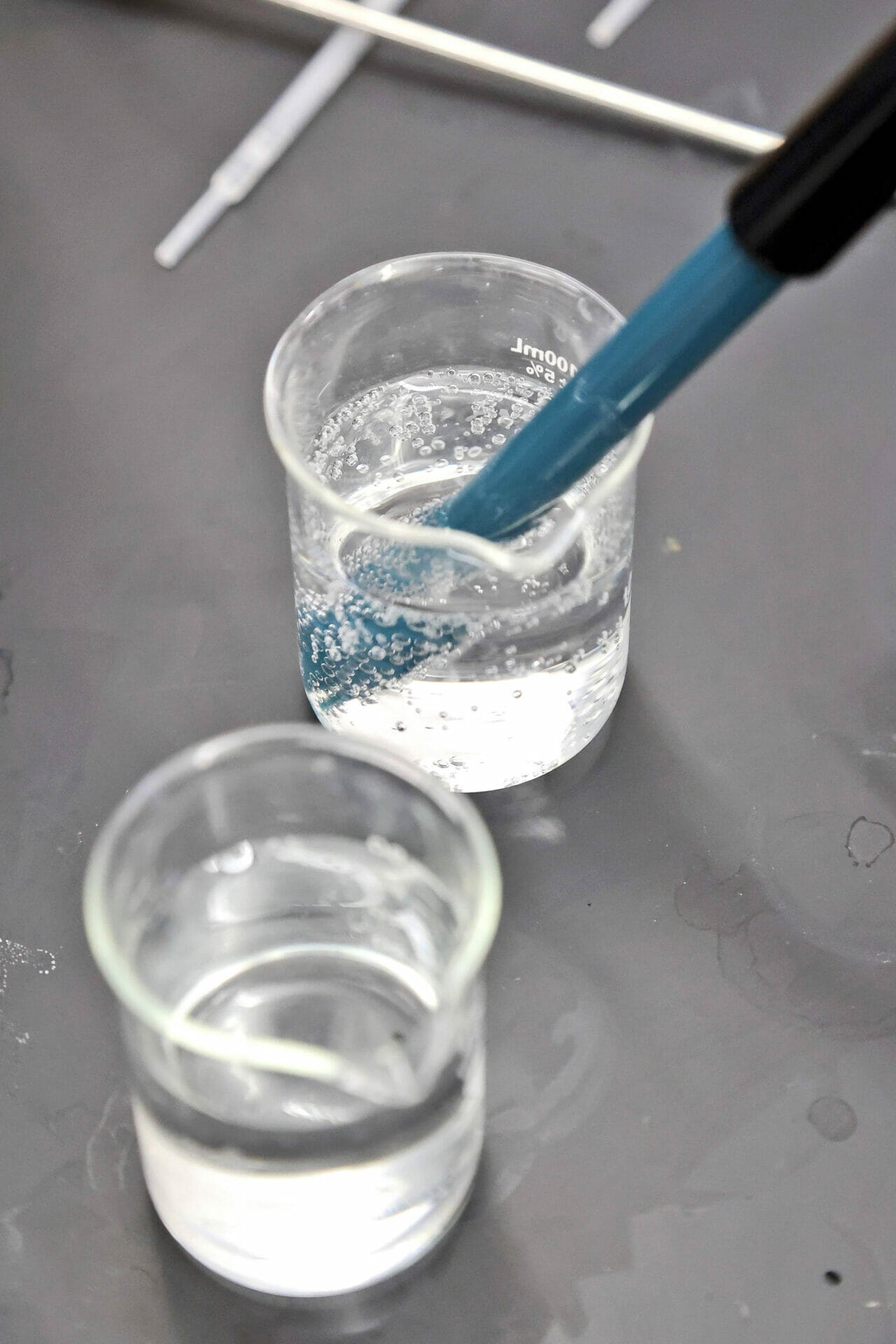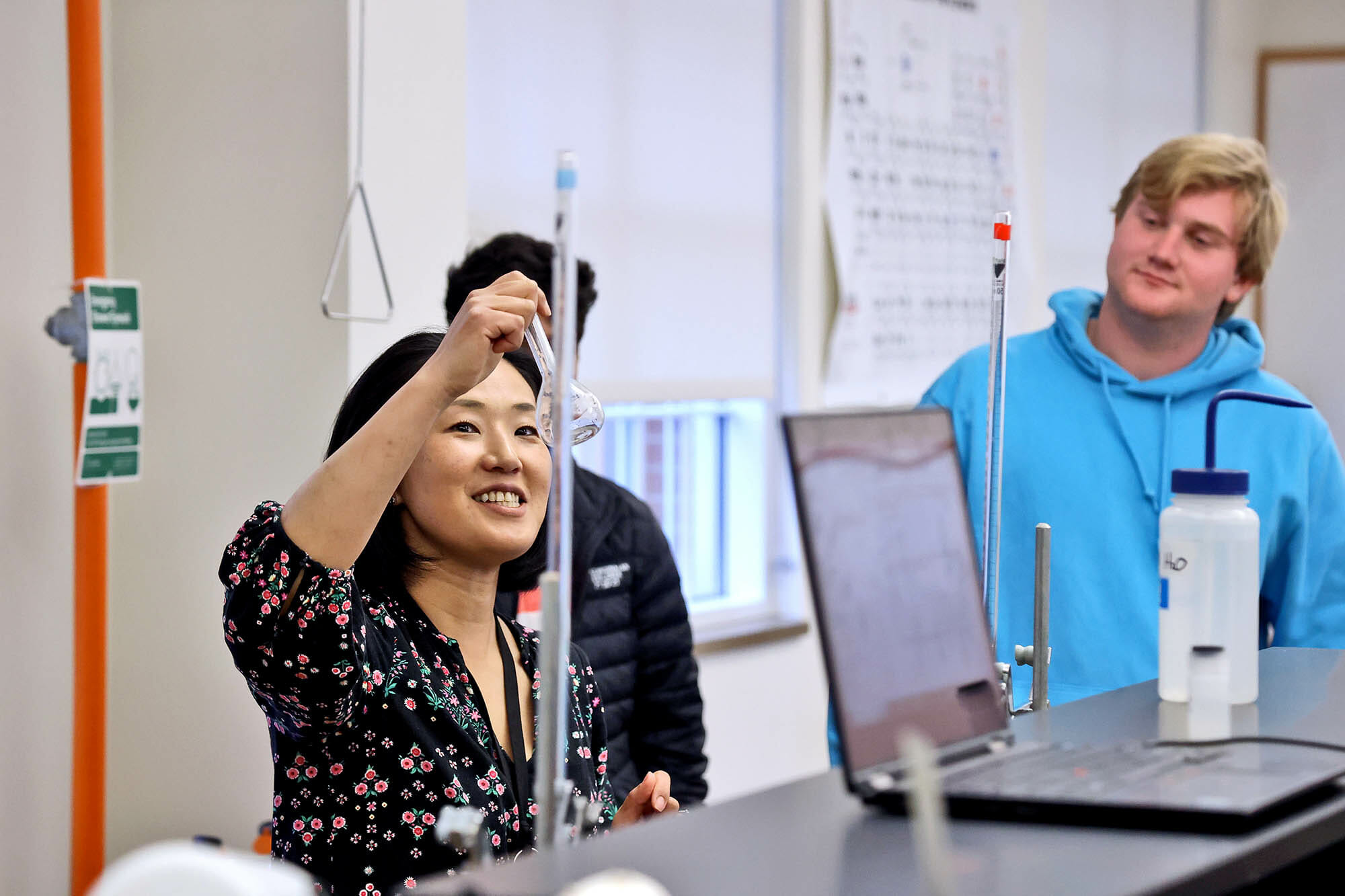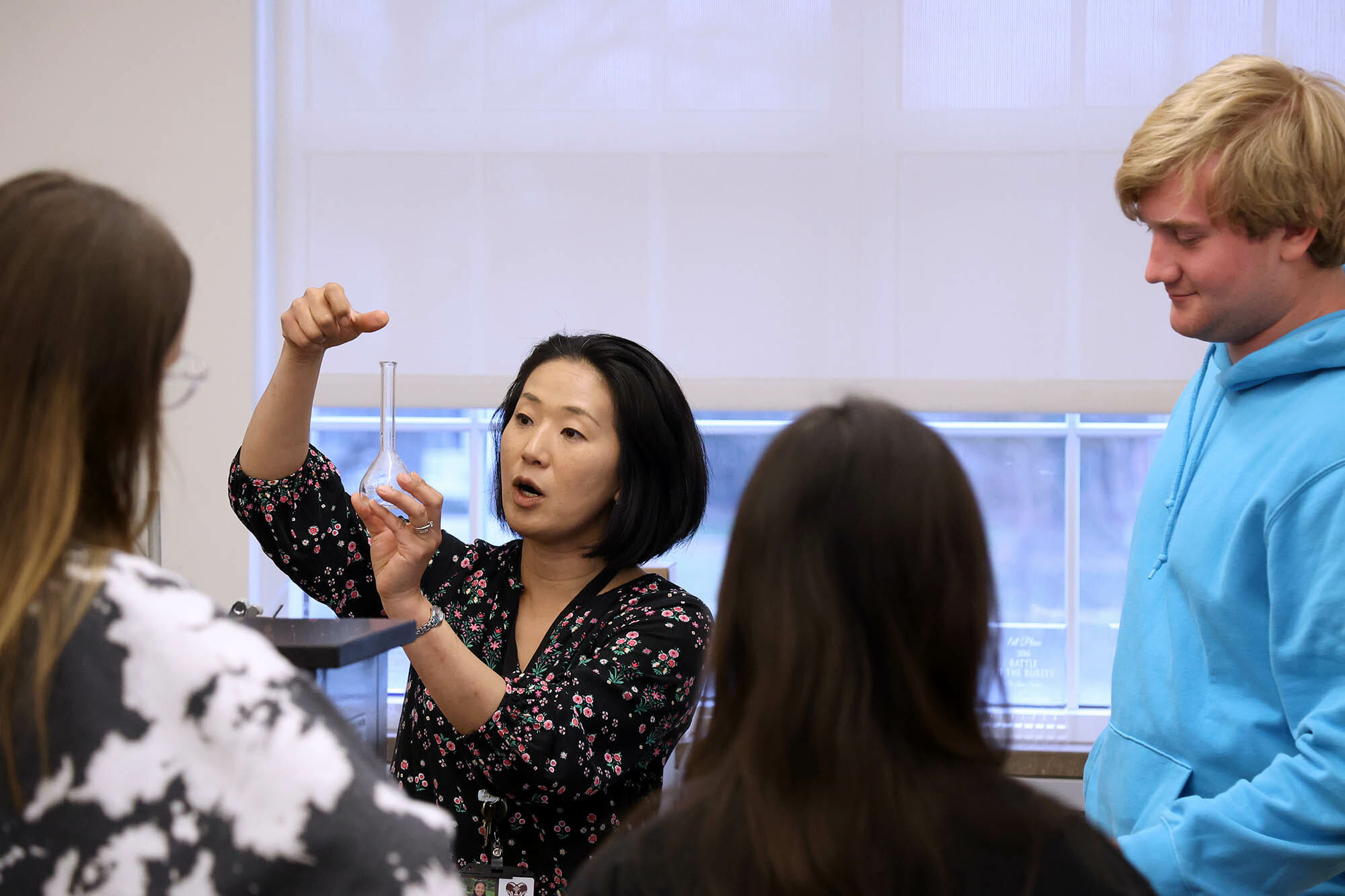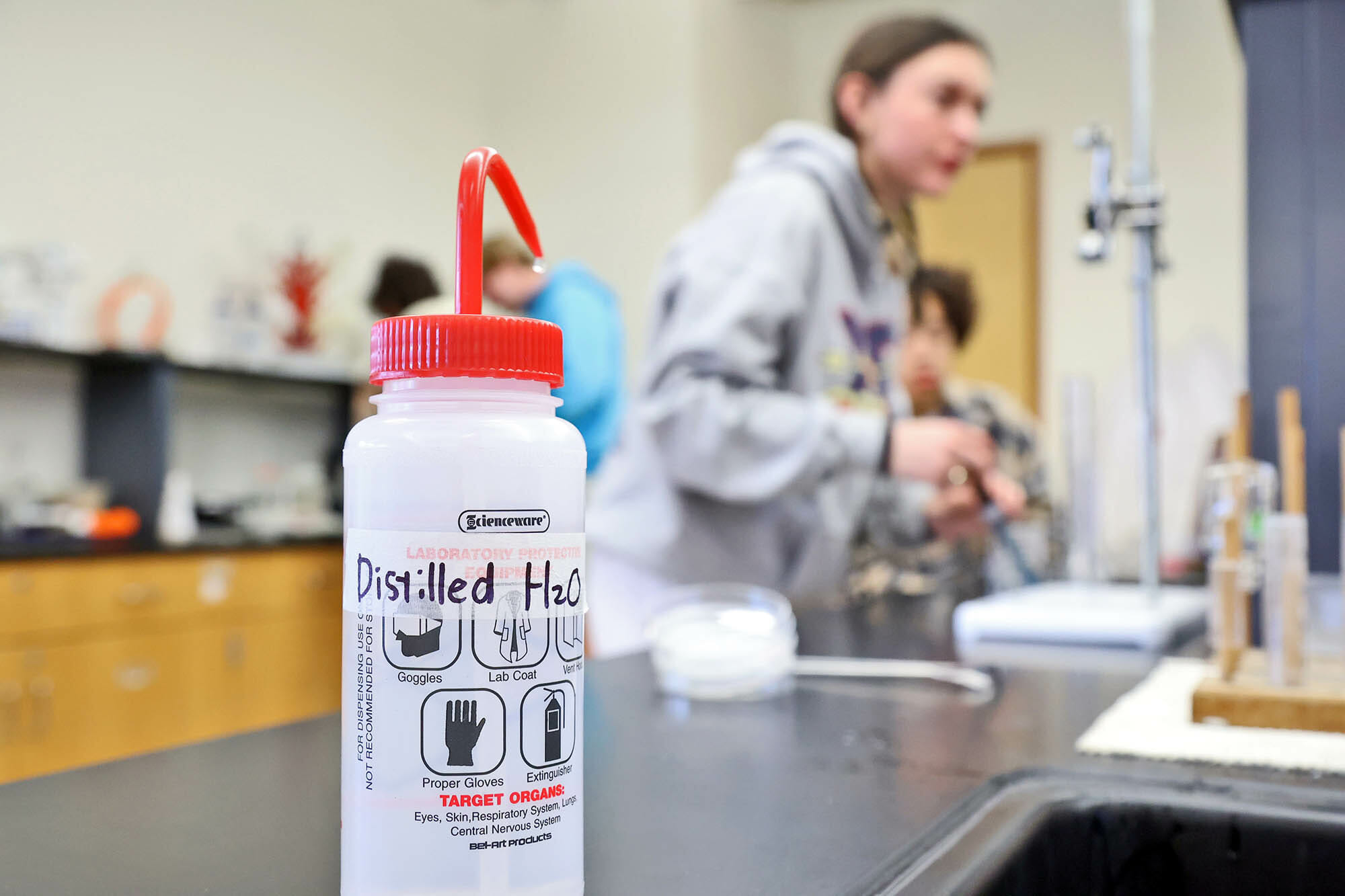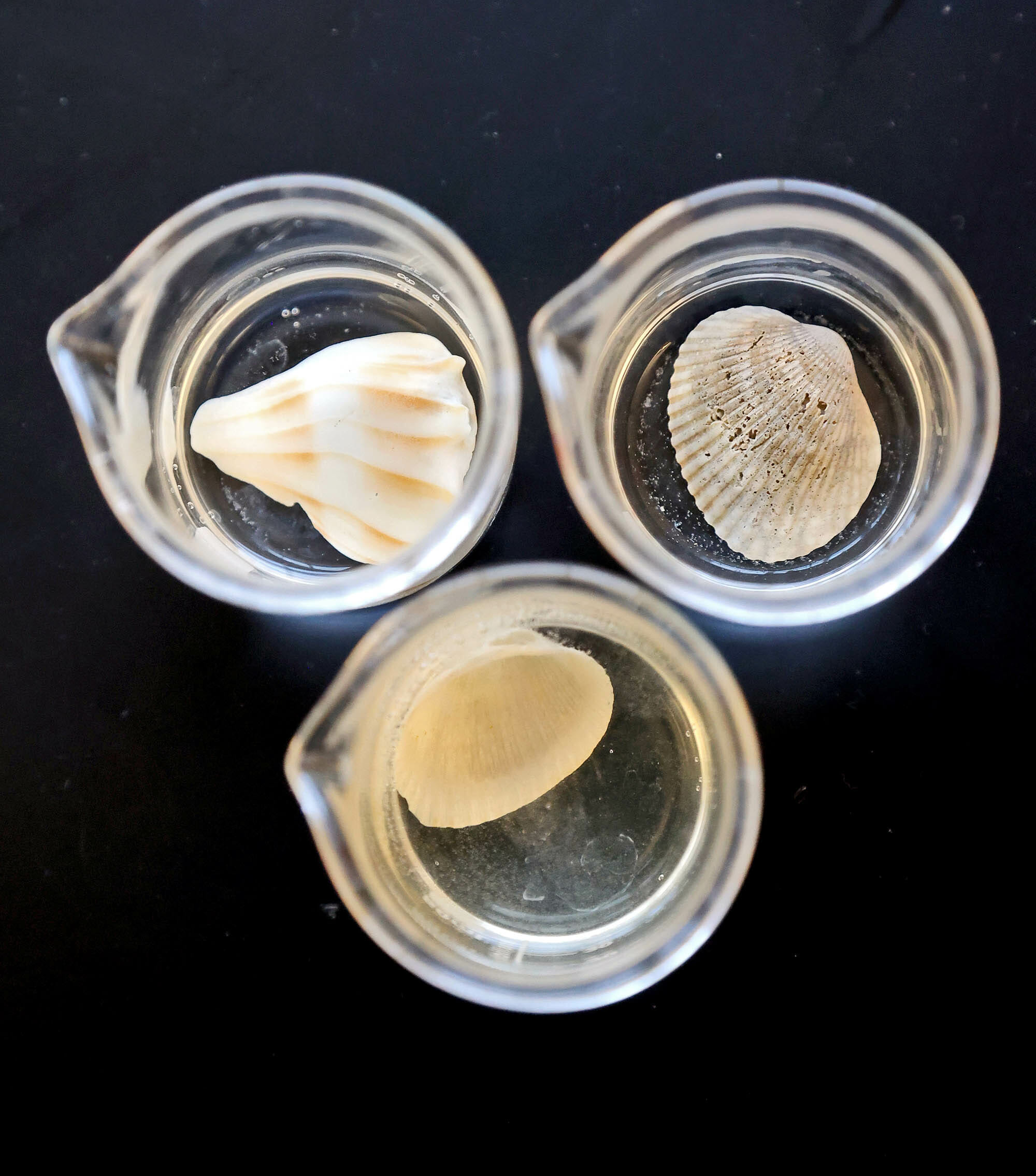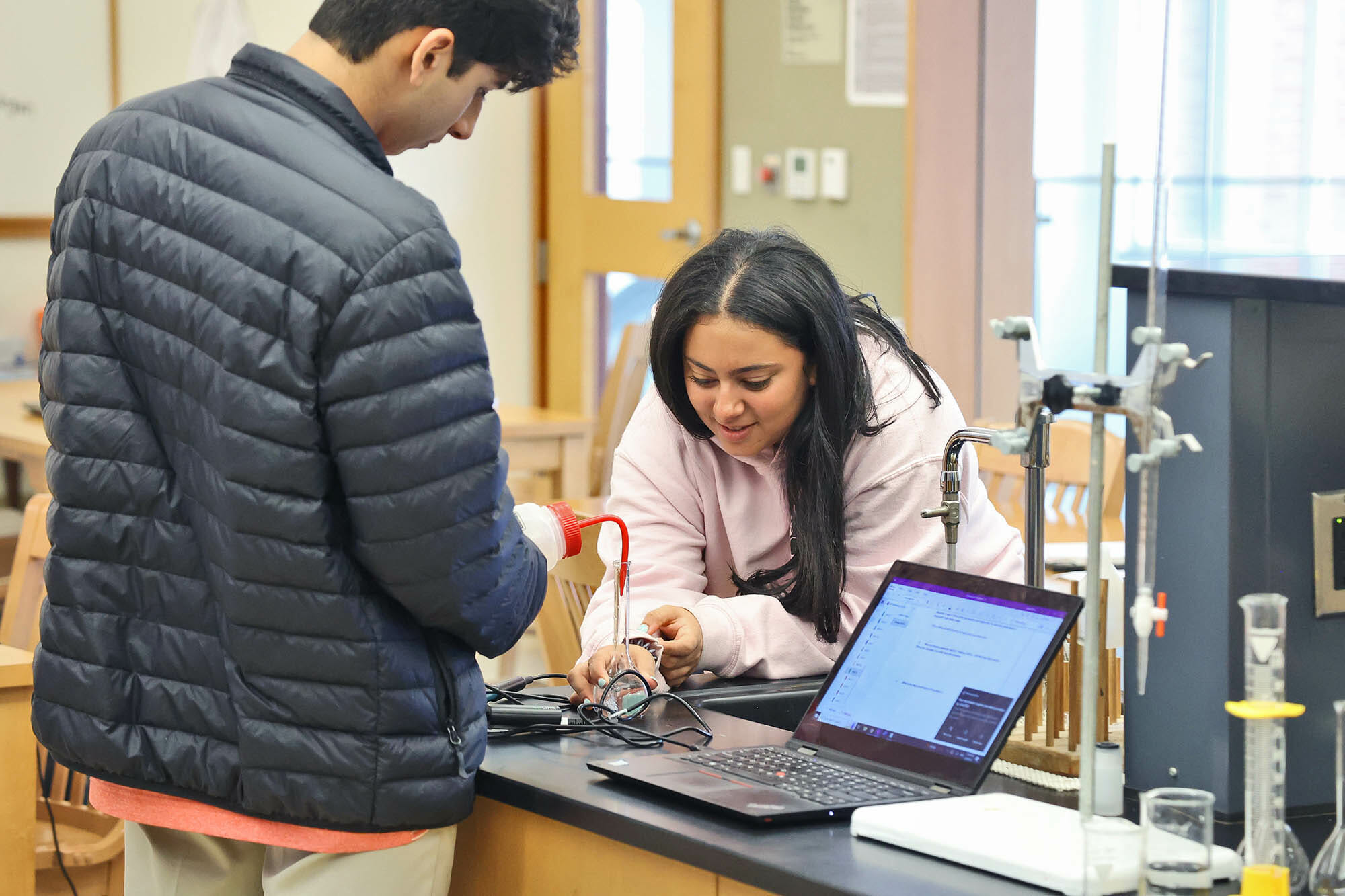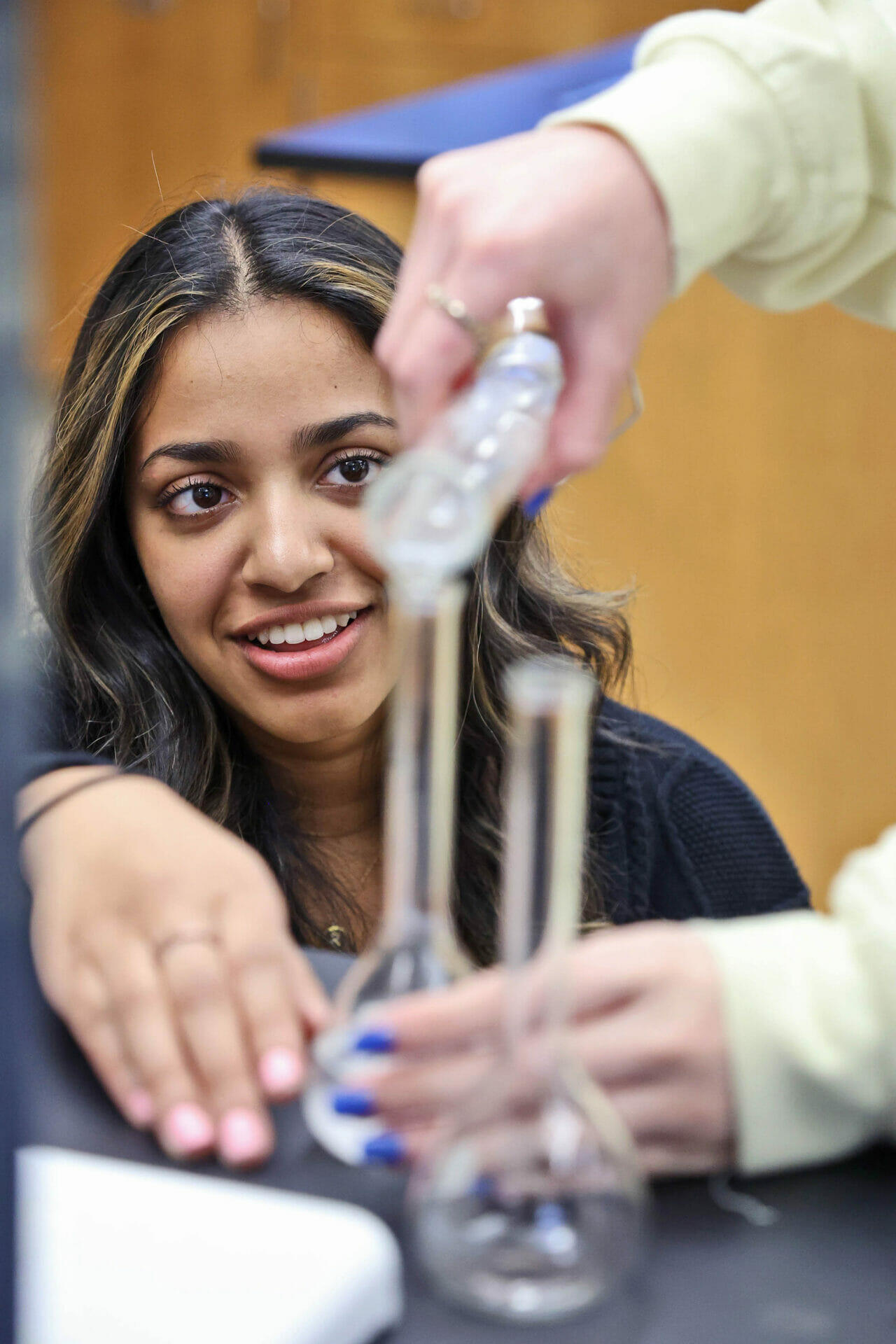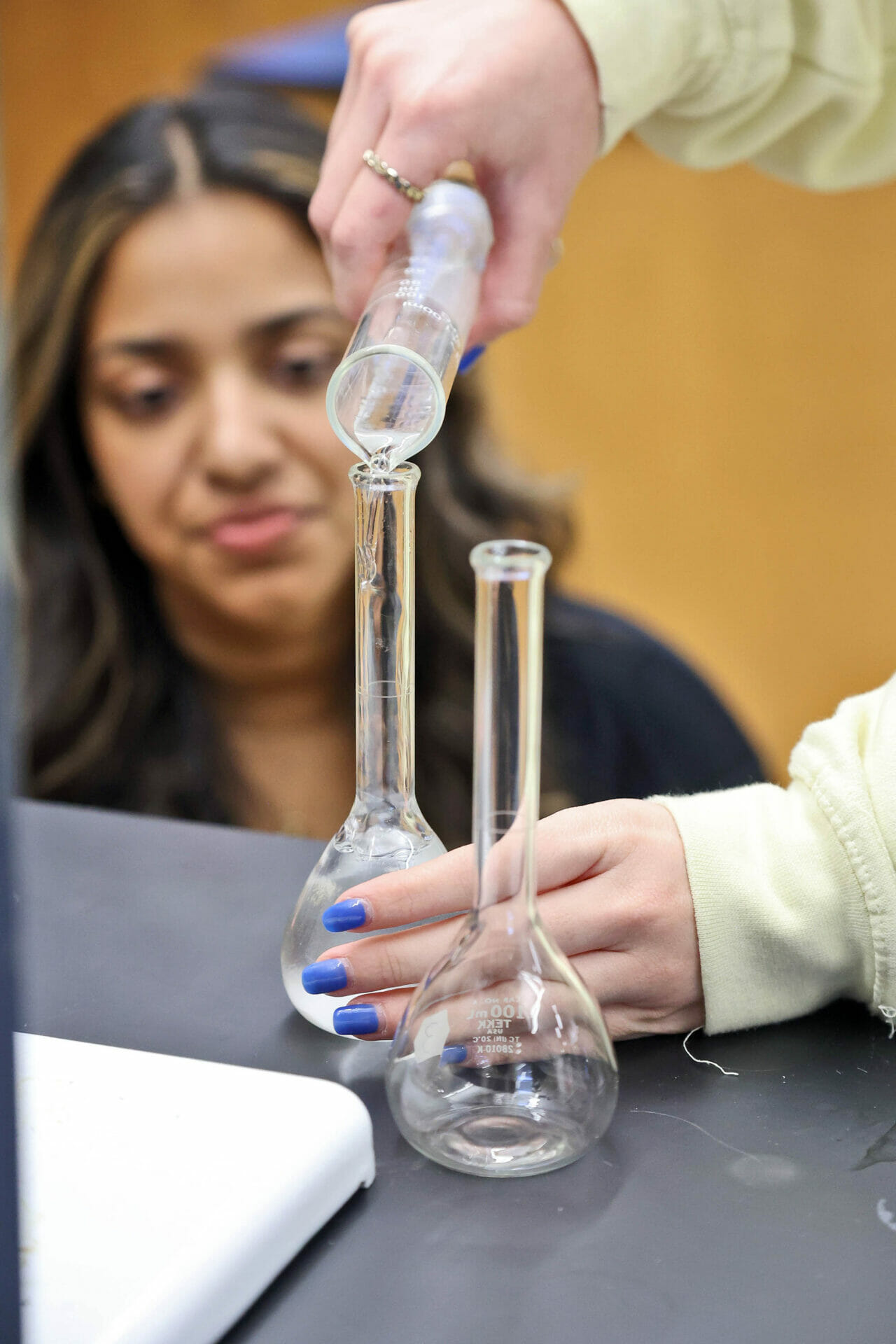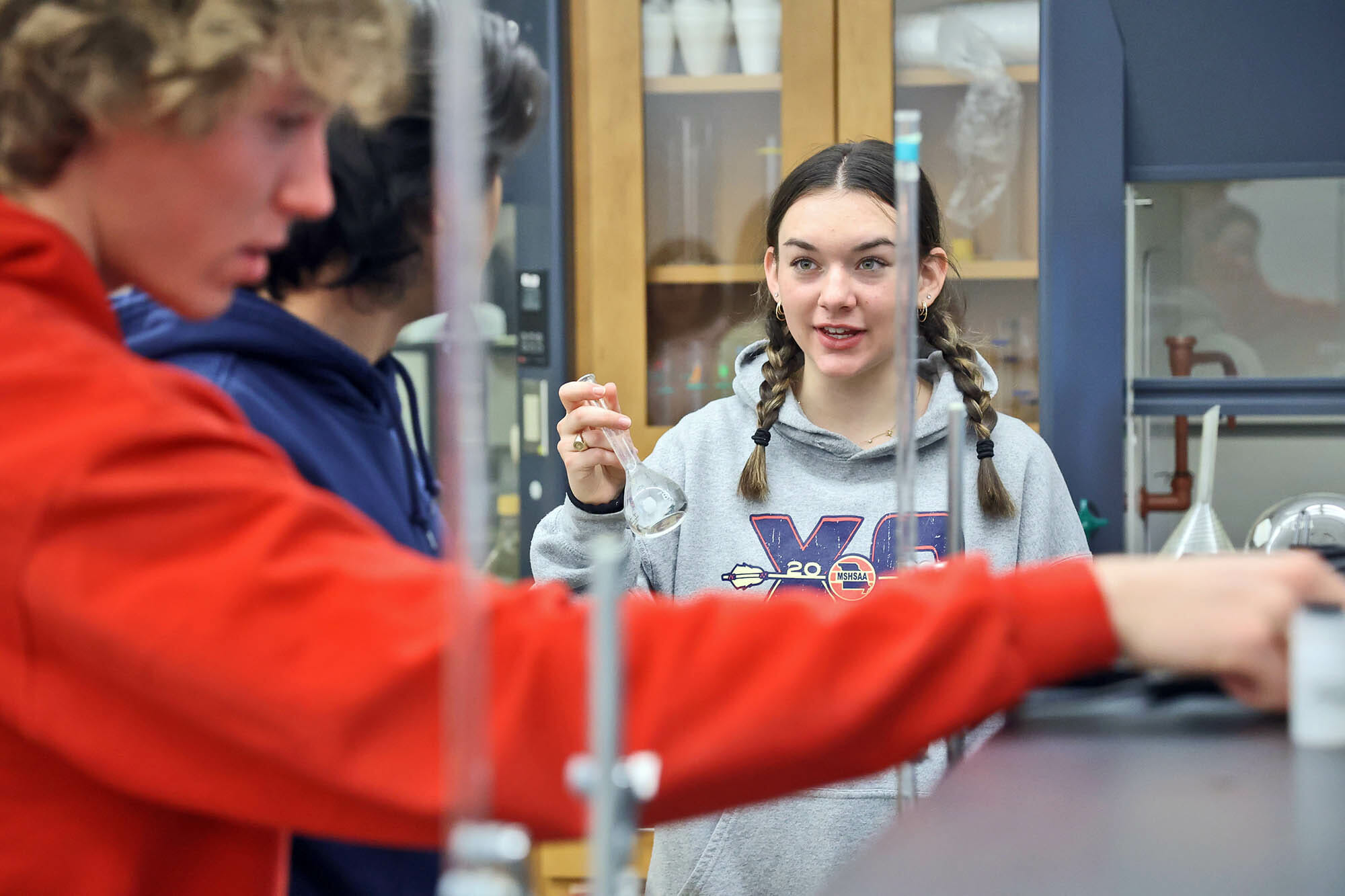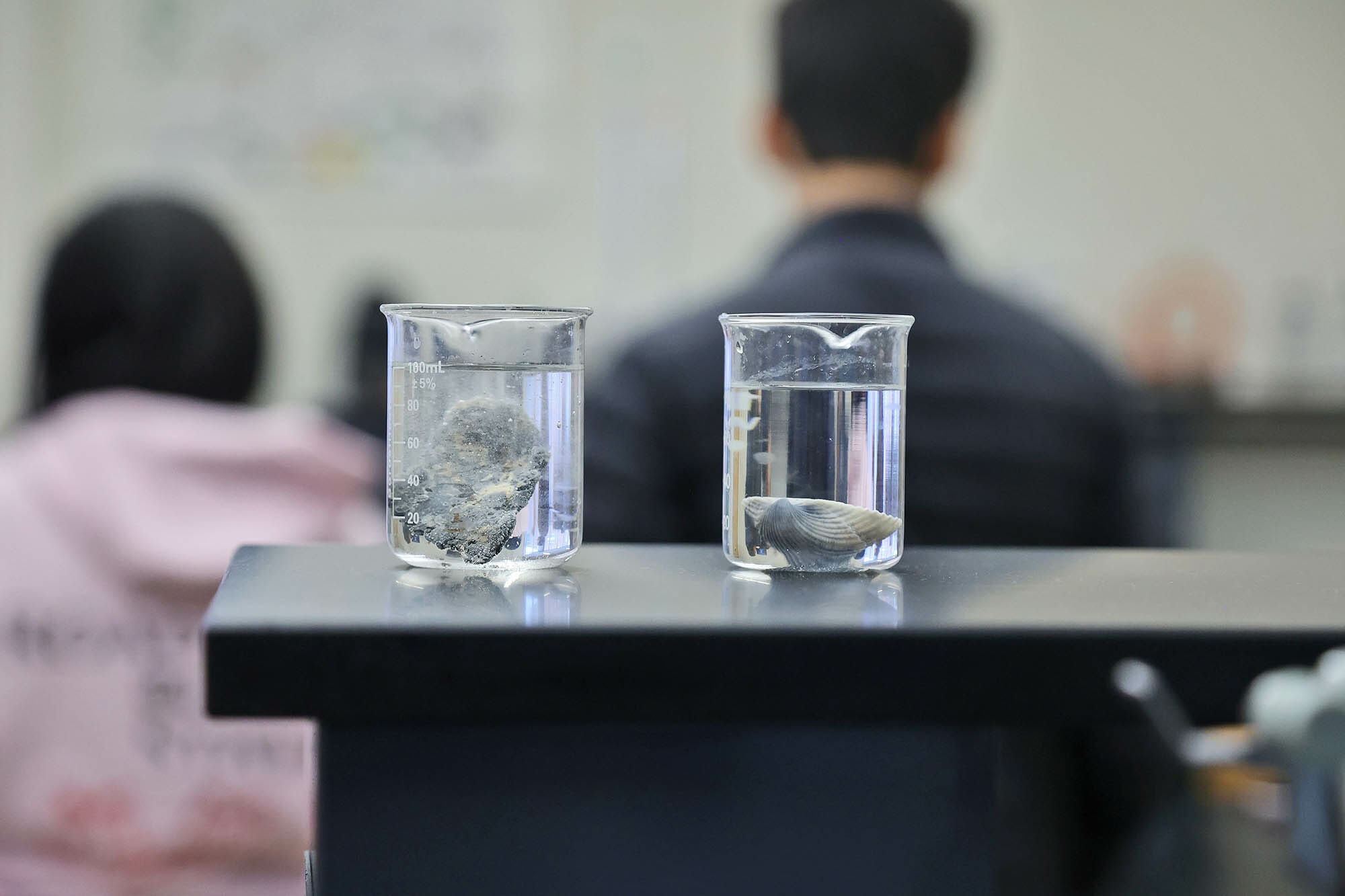Our AP Chemistry students returned from spring break this week to face a challenge: how does ocean acidification affect seashells and other marine biology? Upper School Science Teacher Dr. Meg Yoshioka-Tarver knew that many of her students went somewhere warm during the break and saw the ocean and seashells, and she developed this lab to introduce the idea while tying it to a review of what they’ve already learned. The classes created acidic seawater and conducted a series of experiments, looking at the chemical reaction of atmospheric carbon dioxide being absorbed in the ocean, measuring pH, and observing seashells (made of a basic mineral) dissolving in acidic water.
“AP Chemistry students have been learning chemical equations and acidity/basicity of the chemicals since August,” said Dr. Yoshioka-Tarver. “This lab was a great reflection of their knowledge of what is currently happening on our planet. The students were able to explain why atmospheric carbon dioxide contributes to ocean acidification and explain why marine lives are being destroyed. Many ocean animals and plants need calcium ions and carbonate ions to survive. As the ocean becomes more acidic as we pollute carbon dioxide into the atmosphere, it will change the concentrations of those chemicals in the ocean, and the coral and shell animals, which rely on those chemicals, will not be able to survive.”
The students used distilled water, club soda, sodium chloride, and vinegar to see for themselves how the acidity of seawater could affect marine biodiversity. They checked the pH of both tonic water and distilled water using a meter, and noted why the pH is different for each. They also observed what happens when carbon dioxide dissolves in water, writing a chemical equation that shows why the carbonated club soda is more acidic than distilled water.
Then it was time to prepare seawater. Seawater contains 3.5% of sodium chloride by mass, so the students had to develop a procedure to prepare 100 mL of 3.5% sodium chloride using appropriate equipment. After preparing their seawater, they conducted further tests by adding vinegar to the some of the solution, creating both a normal ocean environment and an acidic ocean environment. Finally, the students placed sea shells into their two solutions and observed what happened. Seashell is made of calcium carbonate. Is calcium carbonate acidic, basic, or neutral compound? It’s mildly basic, so it will begin to dissolve when placed into an acidic solution. The more acidic the solution, the faster the shells dissolve. The students created a highly acidic environment so they could more quickly observe what happens, but even a slight change in pH is enough to destroy marine biology.
“It was fun and interesting,” said Zoe Zlatic ’24. “It was cool that we were able to take what we’re learning in class and apply it to a real-world scenario, especially something that is a prominent issue today and will continue to be in the future.”
Owen Limbrick ’23 agrees. He said, “This lab helped me to realize some of the applications chemistry has on today’s world. As climate change continues to have a growing global impact, it is important to understand how and why the phenomenon is occurring on the most basic chemical level. I think that modeling today’s environment in a laboratory setting was a great reminder of how the things we learn at MICDS can prepare us to make an impact on the outside world.”
“This lab was really fun and I enjoyed how interactive it was,” said Abby Wyckoff ’24. “Everything we’ve learned this year kind of came together and allowed us to understand and explore a real-life problem facing our environment. We saw how chemistry makes an impact in the real world, not just in the classroom.”
Why is it important to monitor the acidity of our oceans?
When too much of carbon dioxide is present in the atmosphere, the ocean absorbs roughly one-third of carbon dioxide emission, causing its pH to change. By the end of this century, the surface of the ocean is predicted to be 150% more acidic than we have experienced in 20 million years.
The consequences of disrupting what has been a relatively stable ocean environment for tens of millions of years are beginning to show. Ocean acidification is literally causing a sea change that is threatening the fundamental chemical balance of ocean and coastal waters from pole to pole. For good reason, ocean acidification is sometimes called “osteoporosis of the sea.” Ocean acidification can create conditions that eat away at the minerals used by oysters, clams, lobsters, shrimp, coral reefs, and other marine life to build their shells and skeletons.
Human health is also a concern. In the laboratory, we can see that many harmful algal species produce more toxins and bloom faster in acidified waters. A similar response in the wild could sicken fish and marine mammals while harming people who eat contaminated shellfish. And while ocean acidification won’t make seawater dangerous for swimming, it will upset the balance among the multitudes of microscopic life found in every drop of seawater. Such changes can affect seafood supplies and the ocean’s ability to store pollutants, including future carbon emissions.
What a great experiment to show students the chemistry behind our oceans!
Information from lab introduction courtesy of National Ocean and Atmospheric Administration (2020) Ocean Acidification, Department of Commerce, https://www.noaa.gov/education/resource-collections/ocean-coasts/ocean-acidification
